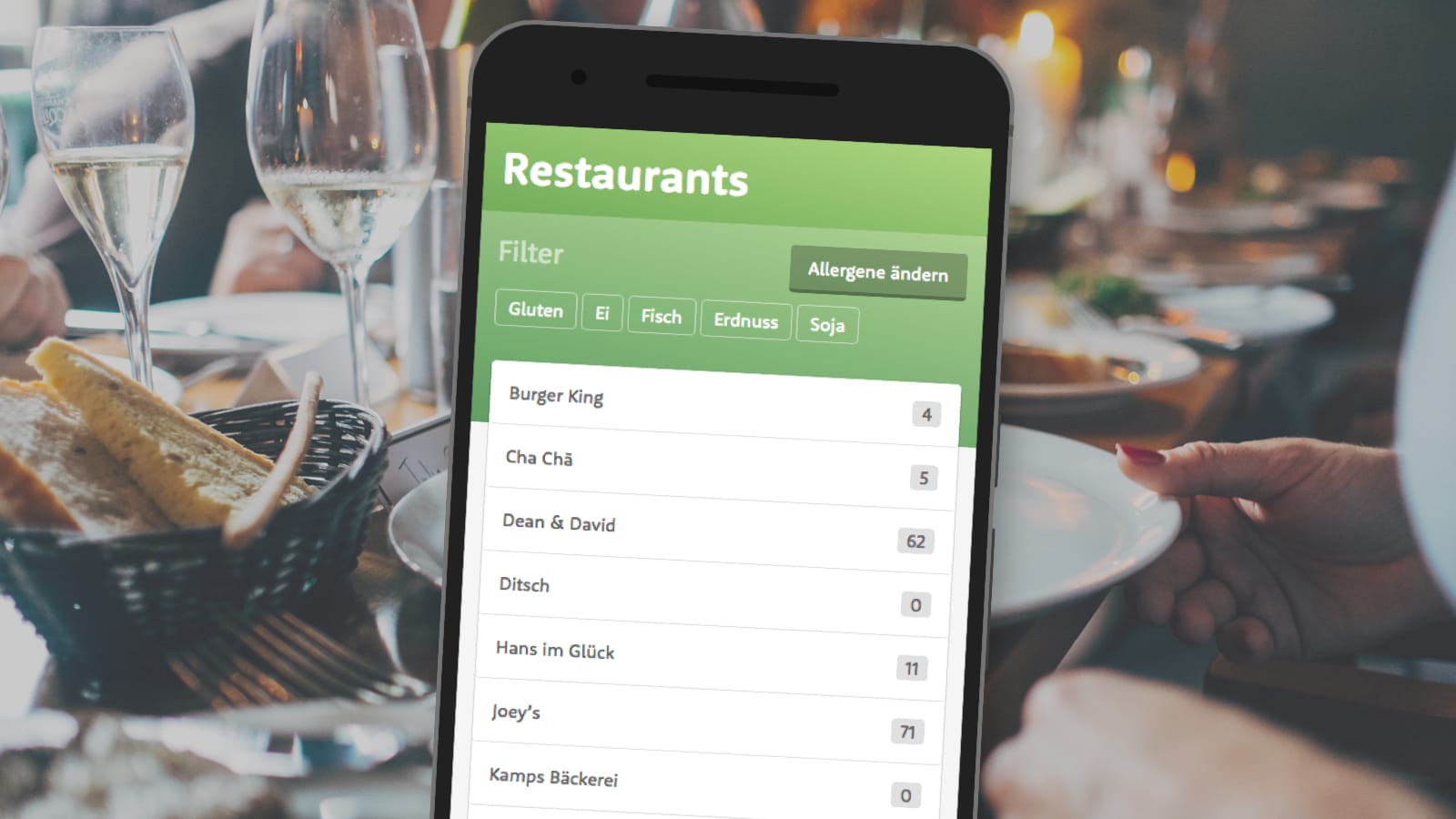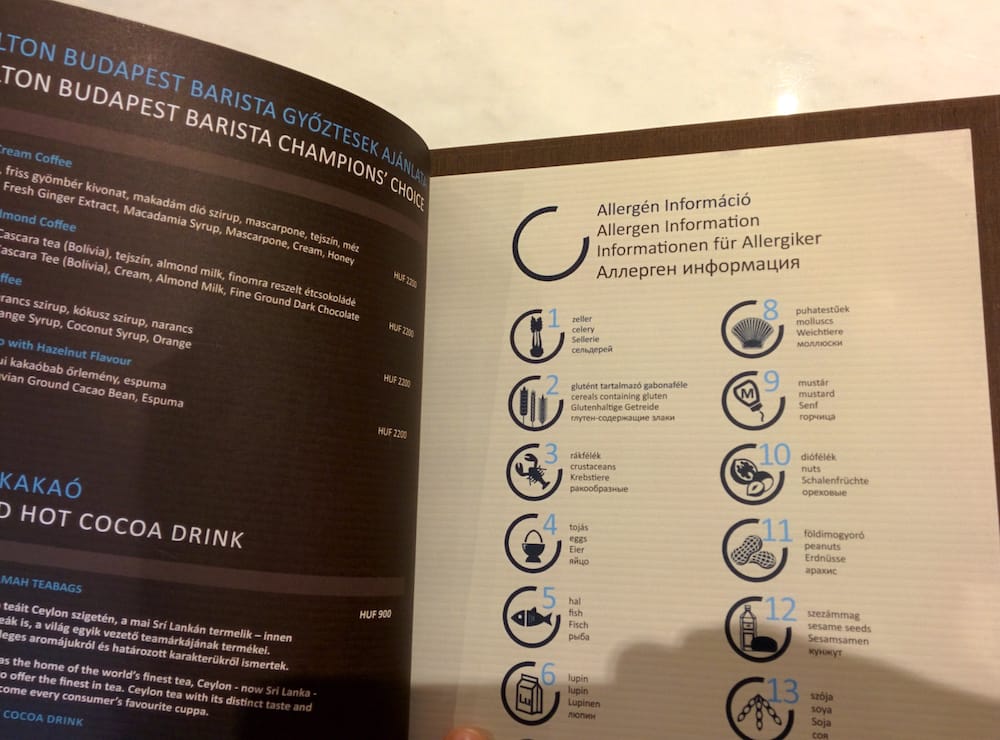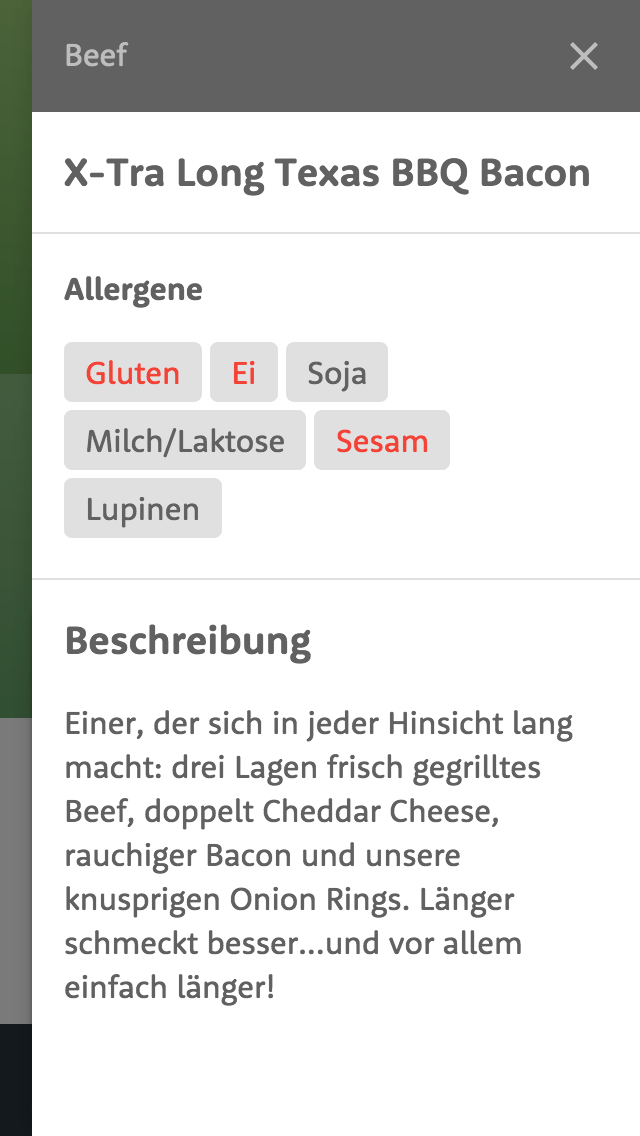

Better food safety, more transparency for the consumer. On December 12th 2011 the EU Food Information Act became law.
“The supply of information about food serves for a widespread protection of the health and interests of consumers. Consumers are given the basis for a substantiated choice and safe usage of food under special consideration of health, economic, ecologic, social and ethical aspects.”
European Parliament (2011): “Regulation (EU) Nr. 1169/2011”, page 9
Amongst others, this regulation set a minimum font size for packaging, declarations of food imitations and improved guidelines for the labeling of packaged goods. Apart frp, additives in their dishes, restaurant owners also had to declare allergens that occured in their food.
Legislation gave no clear guidelines on how to implement this new law. Everyone just knew that they had to follow it. That creates a multitude of solutions. Here’s a glimpse of the mess that I documented and an approach to solve it.


It seems to be a common trait in politics that sometimes great initiatives start, but aren’t thought until the end. For the Food Information Act I started to get the feeling that there wasn’t a lot of thought put into the ways of implementation. What tools will restaurant owners have? Everyone knew what to declare but now how. What declaration system should they use? Letters? Numbers? Symbols?
“We consciously let [those declaration systems] open. We wanted to give some latitude for the different industries.”
Christian Fronczak, press secretary of Germanys “Federal Ministry of Food, Agriculture and Consumer Protection” (BMELV). Source: Witty GmbH & Co. KG (2015): „Witty News Magazin 01/2015“, page 36f

What legislation didn’t foresee was the psychological effect that the declarations have on guests. Before the allergen declaration became mandatory, people were used to only additives being declared. Suddenly the list of numbers, letters and symbols grew, thereby cluttering the visual appearance of restaurant menus. Perfectly normal, high quality dishes suddenly looked like foods that were packed with additives. A colleague told me that she doesn’t order a dish that has a lot of numbers behind it. She doesn’t know what “they mean.”
“The time it takes to constantly update the menu is annoying. At the same time it looks like if our food is making you sick. Suddenly there also seem to be a lot of wannabe allergy sufferers that are suddenly allergic to various things because they don’t want to tell us that they don’t like something.”
Personal interview with a restaurant owner in April 2016
This was confirmed to me by Marcel Tekaat, director of the hotel and restaurant “Hof Grothues-Potthoff” in Senden, Germany. A cluttered menu that reads like the inventory list of a chemists lab doesn’t fit with their overall brand. For this reason the establishment introduced two separate menus. The one with all declarations is given out upon request.
How might we help chefs with the implementation of the EUs Food Information Act? How might we leverage the restaurant experience of people with allergies and intolerances, make them feel included and taken care of?
In addition to interviews I conducted a online poll which was completed by 396 participants. With this I wanted to find out who I’d be designing for.


I was going to build a web app that filters the menus of franchise restaurants. You can create a profile of up to 14 allergens that you want to avoid. The app then shows a tolerable selection of dishes. For trips abroad proven translations of the allergens are available so you can use your phone to communicate those.
Based on interviews with restaurant chefs in Germany and Switzerland there are just too many variables in a fresh cooking kitchen that make it hard for the allergy declaration to be consistent. Franchise restaurants have processes in place to ensure the same ingredients and preparation methods across all restaurants. That provides for some security and trust. Besides that it could be used country-wide by a larger group and not be locally limited.




